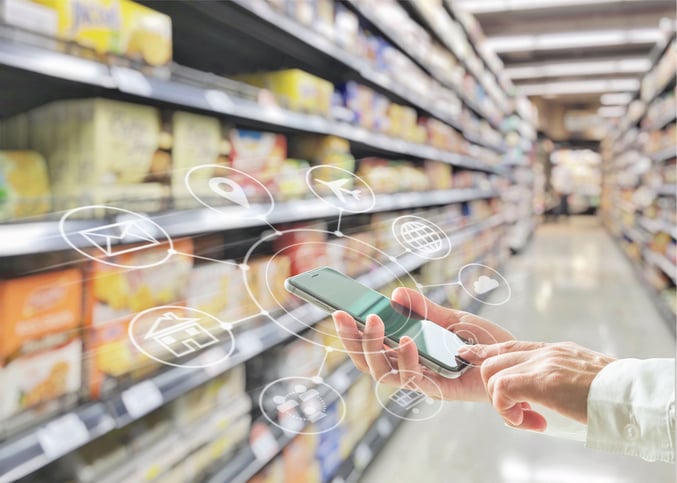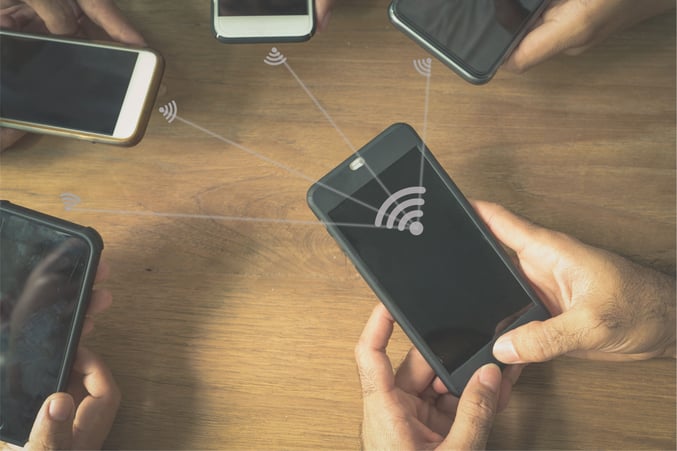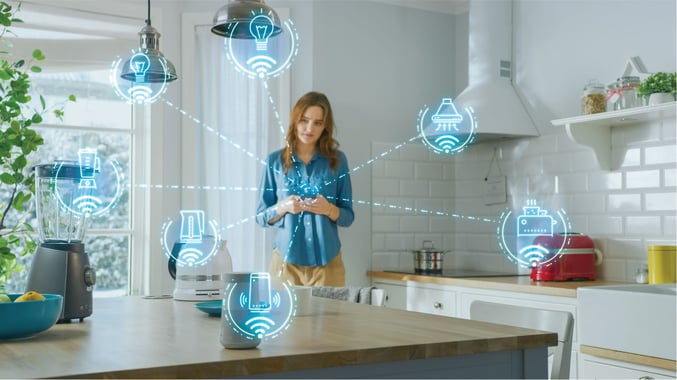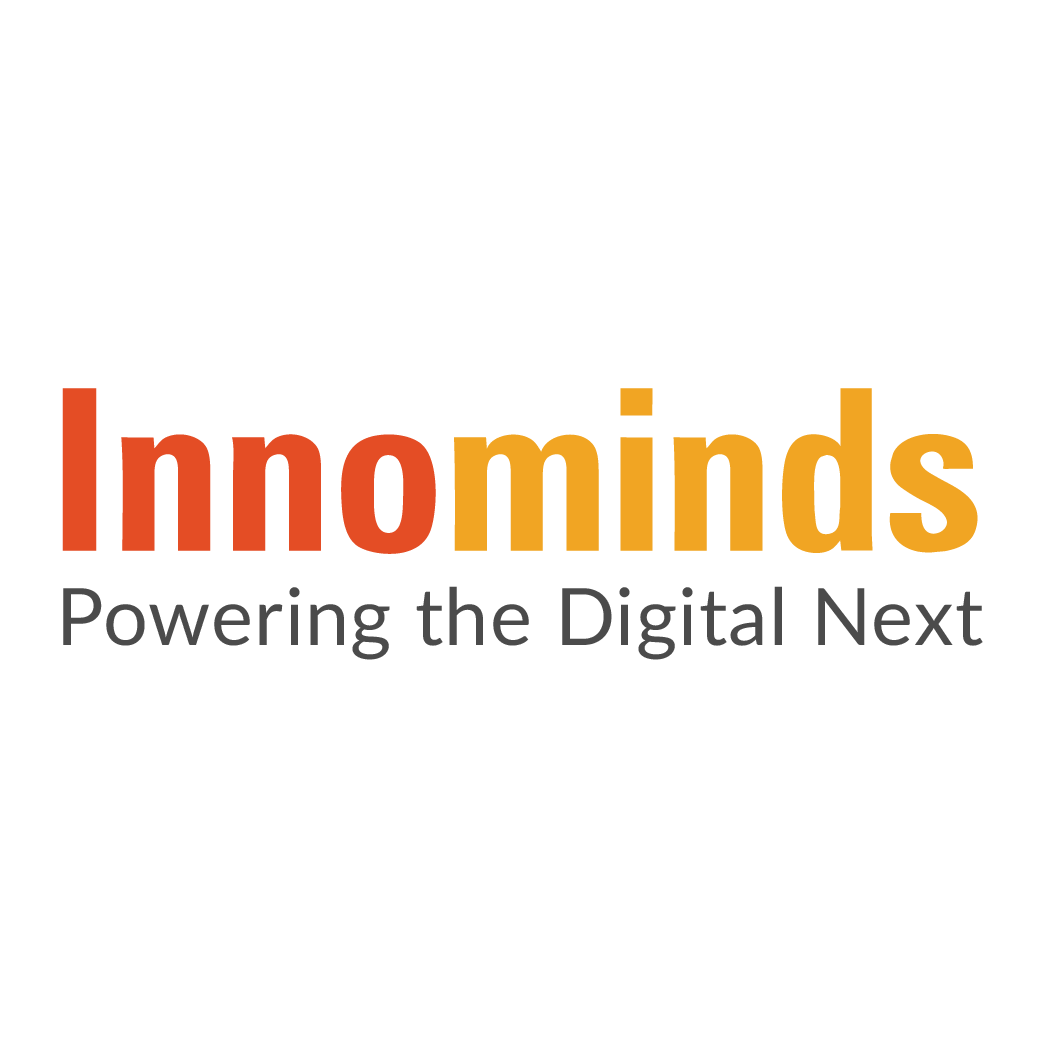
All the interrelated computing devices and digital machines, which are either embedded with sensors, software, processing ability, or other technology and have the ability to transfer data over a network eliminating the need for human-to-human or human-to-computer interaction together form the Internet of Things. All these Connected Devices can be defined as a web of ‘Smart’ devices connected to each other via the internet.
Who all are using these Connected Devices?
According to Gartner, about 14.2 billion connected things will be in use in 2019, and that the total will reach 25 billion by 2021. Following this trend, the number of Smart Devices is expected to double by 2025. Primarily, the current Connected Device market consists of smartphones, computers, wearables, and TVs. Given the accessibility to the internet and the roll-out of the fifth-generation (5G) telecommunications network, developments like voice-activated shopping, e-commerce, connected vehicles, and wearable devices are shaping the future of digital marketing and mobile technology.
Study shows about 77% of Americans own a smartphone but the medium through which consumers interact with digital technology is beginning to move beyond screens. It has been observed that there is a tremendous increase in the popularity of voice-activated speakers and digital assistants and other AI-powered tools which help consumers in making informed decisions.
In order to create newer and intelligent ecosystems for the world that we live in, devices are becoming “smarter”. While purchasing any type of goods or services, consumers continually expect a similar degree of digital interaction for a better and hassle-free buying experience. Most of the consumers are always online which plays a big part in altering the expectations of consumers from the businesses. Consumers simply do not use a service if it doesn’t meet their expectations like a basic requirement of a fully-functional, secure, and easy to navigate website.
What is the influence of technology on consumer behavior?
Consumers are the most empowered ones in today’s world as they have unlimited access to enormous information at the tip of their fingers. Through different Connected Devices, consumers have a bigger voice and several channels to connect with brands to share their opinions. Without a doubt, the IoT is all set to fundamentally change e-commerce, but it will take some time till it's completely streamlined. But as the speed of trends and technology in consumer behavior is moving ahead, tech companies need to evolve faster.
Effects of technology on today’s consumers that are impossible to ignore:
- Consumers are hyperconnected
- Multiple devices used by a single consumer
- Higher expectations
Companies need to understand all the three above-mentioned effects and build a dynamic digital ecosystem to meet consumer demands. Hyperconnectivity can be used towards companies’ advantage by integrating all marketing channels for a cohesive customer experience. A business equipped with the right infrastructure and technologies will be able to capitalize through the effects of technology on consumers as it provides more opportunities to keep the consumer engaged and improve sales revenue.
The behavior of consumers is evolving continually, both adapting to and influencing our permanently connected world. So, it is crucial to understand how our markets are changing as well as how connected the world is.

How can businesses keep up with the pace of change and evolving consumer behavior?
As the digital pioneers are continuously raising their standards of customer experience, a slightly unsatisfactory experience results in a higher customer churn rate. Consumers expect highly responsive, targeted, and relevant communication from businesses otherwise they look for a competitor which offers a better experience. For a tailored and personalized retail shopping experience, companies can provide location-based trigger notifications about discounts and coupons through geofencing.
Companies need to adopt an omnichannel marketing strategy enabling contextually relevant experiences to engage customers at right time, right place with the right messaging. One of the things which help in improving user engagement and garner customer loyalty is easier access to information through AI-powered chatbots. A constantly connected consumer regards expediency, consistency and personalization higher more than anything. A frictionless flow of information from consumer to business and vice-versa benefits both parties.
We have listed down 5 types of Connected Devices that are changing today’s consumer experience:
- Tablets, Laptops, and Smartphones
According to a study, one-third of the customers supplement their physical shopping experience with a Connected Device through a mobile app or website. As the conversion rates are higher on a laptop as compared to smartphones, building seamless and responsive user interfaces and design experience play an important part. - Connected Vehicles
These days cars are not only a means for transportation but consumers expect their vehicles to be interactive having smart features. Connected car technology is not limited to traditional vehicles but self-driving cars make use of the technology to interact with other vehicles and share information via the cloud. Telematics is improving safety and reducing accidents with 5G connectivity to provide a smoother driving experience to users. - Smart Homes
The growing popularity of voice-activated speakers and digital assistants depicts a trend of making informed decisions with the help of AI-powered tools. Integrating a variety of peripherals such as displays, sensors, cameras for a customized device solution helps companies to analyze usage patterns and generate actionable insights. Upcoming connectivity trends in smart home solutions include smart appliances, lighting, and energy management. - Wearables
Although wearables such as smartwatches, earwear have already saturated the market, some analysts believe that wearables hold the power to replace smartphones as their preferred channel for communication due to the advances in AI-powered voice technology. Companion apps for IoT wearables provide upselling and cross-selling opportunities for businesses. - Home Security Solutions
Surveillance and security devices triggering alerts through voice-controlled assistance provide a great aid in automated monitoring for safety. Fully automated and voice-controlled Automatic Number-Plate Recognition (ANPR) solutions are beneficial for tracking visitor movement in residential communities as it furnishes real-time and accurate information.
So, to keep pace with consumers evolving behavior, businesses need to adopt cutting-edge solutions that help in serving personalized, consistent, and accurate demands of the customers. To provide an enhanced user experience, Innominds developed a companion app for a smartwatch that helps the users in fulfilling their fitness goals by synchronizing fitness data over the cloud and providing better user engagement.
Download this case study to learn more about how Innominds built a Companion App Enhancing the Smartwatch Experience.





